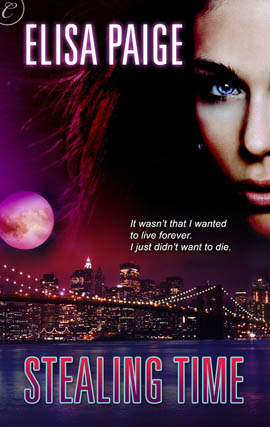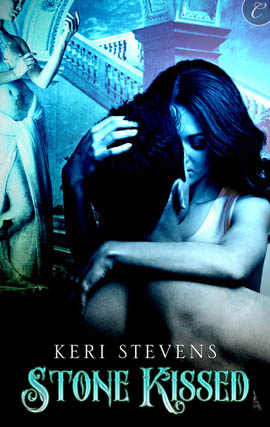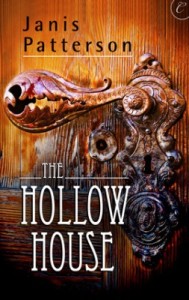I met Amy Wilkins, Assistant Manager of Digital Content and Social Media at Harlequin, at RWA Nationals in NYC at the Harlequin Pajama party wearing my cool “Nick & Nora” Elephant PJ’s and right before we glimpsed the naked Lion King Guy (that is a story for another day). Amy was full of energy, fun to talk to, and clearly loved her job. She was also incredibly knowledgeable about publishing and the new frontier for authors in regard to social media. Before we said goodbye, I took her card and asked her to blog here with us at RU. I am so glad I did!
5 tips to write a book blurb
Thanks to Robin and Romance University for inviting me to guest-blog today!
I’m not an author, but part of my job at Harlequin does involve writing copy—back cover copy, that is! I write on average eight BCBs per month for Harlequin’s ebook exclusives (including Spice Briefs and Harlequin Historical Undone) and Carina Press.
Being able to write a good blurb for your book is an important skill to have, whether it’s for your website, a query to an editor or agent, or for your self-publishing book. But it can also be challenging—it’s completely different than writing a book or synopsis. So here are my five tips for writing compelling copy to grab any reader’s attention:
1) Hook the reader with your protagonist or world.
I usually start a blurb by asking myself what the reader has to know right away that will hook them. For me, that’s usually presenting an interesting protagonist and/or their quest that they will want to know more about. E.g.:
– “When Delia Forrest talks to statues, they talk back.” – Stone Kissed
– “There is nothing Aleron Pitre can’t steal, nobody he can’t con and no situation he can’t slip out of—until he’s sent to the prison planet Tantoret, where every sentence is death.” – Outcast Mine
Other times it’s more important to set the scene by establishing the world of your story, especially if it’s set somewhere unusual. For example, for the steampunk novella Steam eat, I started with an opening paragraph about the world so readers would know right away they aren’t in Kansas anymore:
“In a world of speed steamers, poisoned air and soulless paranormal beings, two people hold the fate of millions in their hands—and their bodies….”
2) Shoutlines: yes or no?
Shoutlines are that bit of bolded text at the start of a blurb or between paragraphs that grab the reader’s attention and entice them to read on. Good shoutlines are unique, short, and convey at least one hook to the story; unsuccessful shoutlines are tired clichés, too long or don’t add anything of value. Some shoutlines I like are:

– “’Which sexual fantasy is your ultimate turn-on?’” – Her Fantasy (tells right away it’s a hot book!)
– “Their First Christmas, Bound Together…” — Believe (conveys the popular holiday theme, but also hints that this is a BDSM romance)
Some things to ask yourself about adding a shoutline: Do I really need this? What does this shoutline add that the reader won’t get in the rest of the blurb? Is it a cliché (e.g. “Second Chance at Love”)?
3) Perform plot triage.
One question when it comes to writing book blurbs is how much plot to include. When you really a love a book, it’s tempting to mention every plot point and character, and it can be difficult to determine what the reader really needs to know. But including too many plot details can bore your reader or confuse them about what the book is about. I recently read a blurb that had too much about the heroine’s horrible boss…and it made me think he was the hero! It was a turn off until the actual hero was mentioned in paragraph three, but I could have already stopped reading and moved on….
Some questions to ask yourself to avoid putting in too much plot: Does your reader really need to know that (and be harsh)? Could it be considered a spoiler? Are you telling the whole plot, including how the conflict will resolved?
So I don’t go overboard on plot details, I pick a spot in the book, usually a quarter or a third of the way in, and don’t include anything that happens after that point. That’s usually enough to set up the overall story, without giving everything away. I consider anything within the first quarter a spoiler-safe zone.
For a romance specifically, the focus should always be on the hero and heroine, and their relationship. If a plot detail doesn’t directly contribute to the progress of their relationship, consider cutting it from the blurb.
4) Use the manuscript.
Sometimes authors’ own words are the best tool to sell a book. Using lines from the manuscript gives readers a sense of what the book is like by showcasing the author’s voice. For this reason, I always read at least the first 15 pages of a book and highlight passages of the manuscript that I might use.
For example, here’s the opening paragraph for The Hollow House by Janis Patterson:
“I decided to use the name Geraldine Brunton. It’s not the name I was born with, nor the name I married, but it will hide who I really am…and what I have done.”
That is almost straight from the book, with some tightening. It’s perfect for copy because it sets up so much: the protagonist’s name, the fact that she’s under disguise, and she’s done something in her past she has to run from. It also conveys the voice and the fact that the book is written first person.
If you’re not writing your own book blurb, one thing you can do to help the copywriter is to provide a well-written, accurate synopsis—it’s invaluable for the copywriter and you may just see your own words in the finished copy.
5) End with conflict.
Always leave the reader—or agent, or acquiring editor—wanting more. The last line should leave them dying to read the book to learn how the story ends, and the best way to do this is by beefing up the conflict in your final line. When we read a great blurb out at Carina Press meetings, they often end with the team saying “dun dun duuuunnnnn!” because it closes on conflict and drama. Your reader should wonder “How on earth are they going to solve that?”
There are few different ways to hook your readers:

– Hint at future danger (“When their investigation leads them to a city hall conspiracy, both their lives and their newly reignited flame could be permanently extinguished…” – Risking Trust)
– Remind them what’s keeping the h/h apart (“But amidst rival reporters, eager fanboys and overzealous role-players, it’s Emma’s secret that may put the brakes on their sizzling attraction for good…” —Defying Convention)
Resist the urge to hint at how things will work out—editors and agents will find that out in the synopses and readers will find out by reading the book!
***
So, do you have any questions for Amy about writing the book blurb or other types of copy? Questions about her job at Harlequin? Maybe a little curious about the social media aspect of her job? Let ’em rip!
On Friday, Theresa Stevens talks about understanding heroes.

